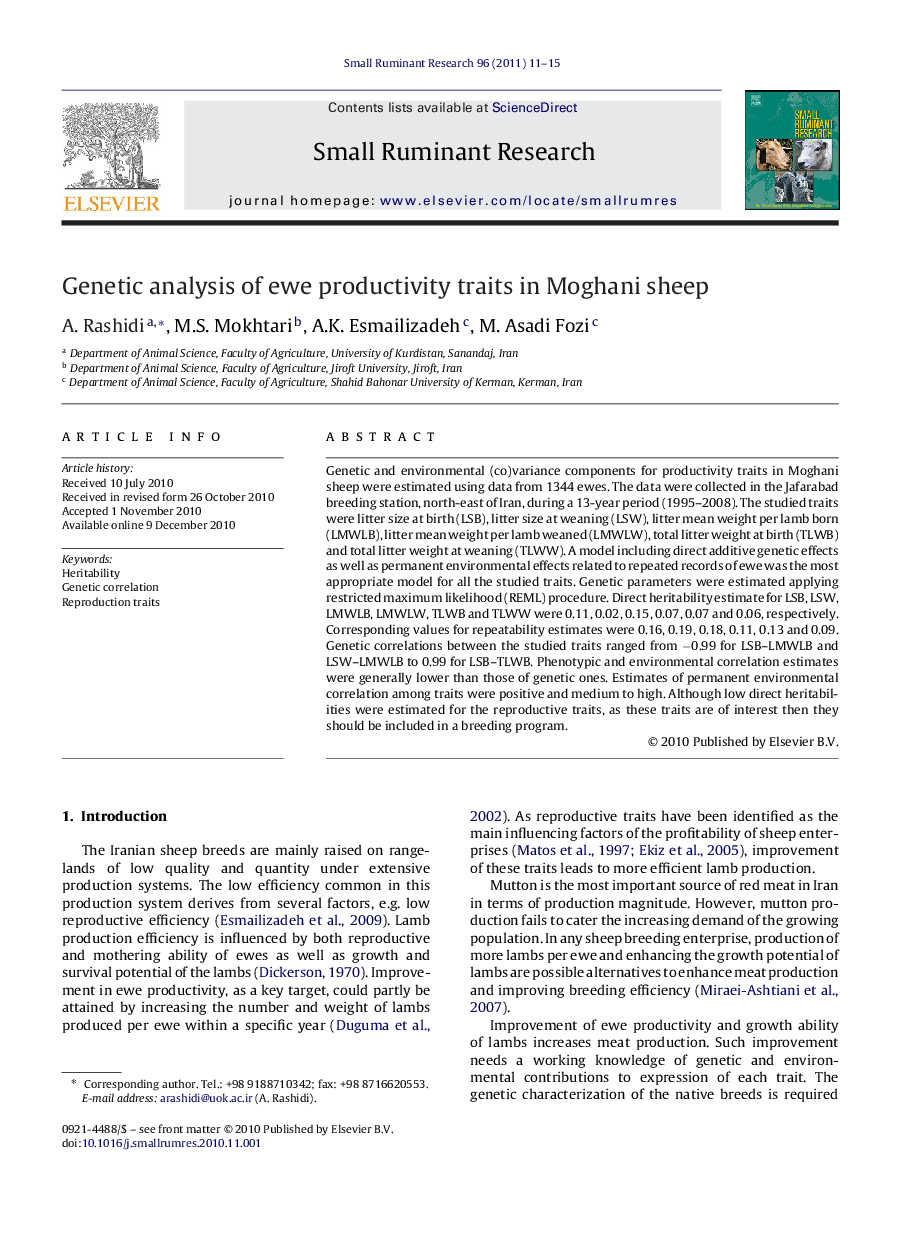| Article ID | Journal | Published Year | Pages | File Type |
|---|---|---|---|---|
| 2457410 | Small Ruminant Research | 2011 | 5 Pages |
Genetic and environmental (co)variance components for productivity traits in Moghani sheep were estimated using data from 1344 ewes. The data were collected in the Jafarabad breeding station, north-east of Iran, during a 13-year period (1995–2008). The studied traits were litter size at birth (LSB), litter size at weaning (LSW), litter mean weight per lamb born (LMWLB), litter mean weight per lamb weaned (LMWLW), total litter weight at birth (TLWB) and total litter weight at weaning (TLWW). A model including direct additive genetic effects as well as permanent environmental effects related to repeated records of ewe was the most appropriate model for all the studied traits. Genetic parameters were estimated applying restricted maximum likelihood (REML) procedure. Direct heritability estimate for LSB, LSW, LMWLB, LMWLW, TLWB and TLWW were 0.11, 0.02, 0.15, 0.07, 0.07 and 0.06, respectively. Corresponding values for repeatability estimates were 0.16, 0.19, 0.18, 0.11, 0.13 and 0.09. Genetic correlations between the studied traits ranged from −0.99 for LSB–LMWLB and LSW–LMWLB to 0.99 for LSB–TLWB. Phenotypic and environmental correlation estimates were generally lower than those of genetic ones. Estimates of permanent environmental correlation among traits were positive and medium to high. Although low direct heritabilities were estimated for the reproductive traits, as these traits are of interest then they should be included in a breeding program.
